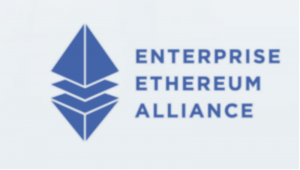
With the EEA’s release of the Enterprise Ethereum Client Specification 1.0, organizations and global development communities now have a single, open-source, cross-platform standards-based framework. This should speed up business transactions, build greater trust in contracts and create more efficient business models.

“The EEA’s Enterprise Ethereum Specification is the result of 18 months of intense collaboration between leading enterprise, technology and platform members within our technical committee,” said EEA Executive Director Ron Resnick. “This EEA open-source, cross-platform framework will enable the mass adoption at a depth and breadth otherwise unachievable in individual corporate silos. With over 500 organizations as members, we anticipate great things in 2018 as EEA members work with the global development community to build, test and certify solutions to grow the ecosystem.”
The EEA Specification
Until its arrival, organizations had to build proprietary variations of a private-permissioned Enterprise Ethereum implementation. The EEA Specification incorporates components developed by the Ethereum Foundation. It is available as a free public document to download.
By replacing ineffective (and often costly) multi-protocol propriety approaches, enterprises can think of developing new ways to create value across entire markets. These include banking, law, healthcare, advertising, communications and more.
Based on the Enterprise Ethereum Architecture Stack, the EEA hopes its open, cross-platform distributed ledger framework will give rise to the next decentralized internet era, the so-called ‘Web 3.0’.
In this, blockchain has the potential to play a significant role. Gartner, for one, expects >$3.1 trillion in business value-add by 2030. With Ethereum already possessing one of the broadest developer user bases worldwide (with more than 500 members), the EEA Specification should assist recognition of Ethereum as a standards-based, enterprise-ready approach.
Interoperability pushes out proprietary offerings
Because the code enables interoperability, this should motivate enterprise customers to select EEA specification-based solutions over proprietary offerings. By taking advantage of hybrid architectures, the EEA Specification provides insight into the future of scalability, privacy, and security.
The result, at least to Ethereum proponents, will be a single, interoperable, development framework for spanning both permissioned and public Ethereum networks. Additionally, the framework includes industry-specific application layers. Definitions will come from EEA Special Interest Groups. The objective are to:
- reduce contract and transaction costs
- attract and increase the number of novel applications.
The EEA has plans to introduce a TestNet to further assure interoperability across member solutions. In addition, the EEA will oversee a members-only Certification Program. This will ensure solutions conform and interoperate with the standard, building confidence in an offering’s performance.

“The EEA’s Specification and growing membership will accelerate the acceptance and deployment of Ethereum blockchain solutions in the global marketplace. The technological breadth, depth, and variety of organizations that can take advantage of the EEA’s standards-based specification will accelerate the growth of the Enterprise Ethereum ecosystem,” said Julio Faura, chairman of the EEA, a founding EEA member from Banco Santander, and head of R&D for Blockchain at Banco Santander.
Enterprise Times: what does this mean
The 1.0 specification is exactly that: a first pass. Good standards depend upon being open and available. Thus, this is a step forwards.
From an enterprise viewpoint the big issue to absorb is that they can now move away having to build proprietary variations of a private-permissioned Enterprise Ethereum implementation. While wider opportunities being their own challenges, the past’s narrow constraints can begin to disappear. Roll on Version 2 of the Ethereum global blockchain ecosystem specification.


























